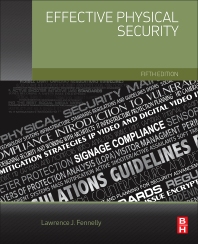After a federal court ruled in favor of ADT and other alarm companies against a fire protection district in Illinois attempting to create a fire alarm monitoring monopoly, that fire district was issued a deadline of Oct. 4 to exit the alarm monitoring business. The fire protection district sent out letters to monitoring customers in the area letting them know they should seek to contract alarm monitoring through one of the private security companies operating in the area. This permanent injunction against Lisle-Woodridge Fire Protection District notwithstanding, the case is not yet “closed.” And the progress made by alarm companies in preventing fire protection districts from forming monitoring monopolies could be reversed by “the stroke of a pen,” said Ed Williams, Illinois Electronic Security Association’s general counsel, at a recent meeting.
Williams has more than 20 years of experience focusing almost exclusively on litigation. He was the guest speaker at an IESA meeting held on Sep. 13 to discuss this lawsuit and its implications. One thing to note, Williams said, is the sheer volume of “transactions” or documents filed with the court in this lawsuit. The number of transactions is currently just over 400 and will continue to grow. “This case has already gone to the Circuit Court of Appeals [four times],” Williams said. “In law school, it’s common when you talk about a case to talk about ABC technology 1 or ABC technology 2, because it went to the Appellate Court twice. We’re already up to ADT 4 and there will probably be an ADT 5, which makes this case extraordinary.”
The initial complaint was filed by ADT along with Alarm Detection Systems, D.M.C. Security, Illinois Alarm Services, and SMG Security in July, 2010. “The court gave its first injunction in November of 2010,” Williams related. “When you go up in front of a court, either state or federal doesn’t make a difference, and present a motion for injunction you’re asking the court to tell them stop what they’re doing. Because if they don’t stop what they’re doing, irreparable harm is going to occur.”
That initial (and temporary) injunction was appealed last August. The Appellate Court sent it back to the trial court with some instructions, primarily centered on the need for all alarm boards to follow NFPA 72.
At the start of this litigation, Lisle-Woodridge made repeated claims that its entrance and need to control fire alarm monitoring was a matter of public safety, quoting out-of-context guidelines from NFPA 72 to show that private central stations take up to 15 and even 20 minutes to respond to alarms. “[That’s] outrageous,” Williams said. “Everybody knows that isn’t the case. And the plaintiffs went in and did their homework and overwhelmed the judge with a number of facts to counter this."
Among the plaintiffs' findings were that the district’s remote supervising station consisted of a transmitting station without any personnel. NFPA 72 requires two people to be on duty at all times at these supervising stations. “Ed Bonifas did a study on all of the data that came out,” Williams continued. “And he came up with some incredible numbers, not the least of which is the trouble signals were being ignored for weeks and in some cases months. As I understand it, this doesn’t automatically mean the alarm is out of service. But it could mean the alarm is out of service. It could mean these people have no fire protection when they think they do.” In addition, the district did not have a license to transmit on the frequencies. “They were using Keltron’s licenses and I believe it was the same frequency range that cab drivers and some other non-emergency service use,” Williams said. So much for public safety.
In the end, Judge Shadur found that the Lisle-Woodridge monitoring station was not NFPA-compliant. This is in addition to determining that fire protection districts are not granted authority to mandate how or by whom alarm monitoring is done. The fire protection district is now compelled by the court to do several things: “They have to allow the industry to populate DuPage County’s CAD system,” Williams said. “What that means in effect is Lisle-Woodridge was claiming a slight 30-second advantage on signal timing because they didn’t have to re-enter at a keyboard. Yet Du-Comm would not let the industry populate its CAD to get on the same level playing field. The judge said everybody’s got to be fair and get the same right to get immediate transmission without human intervention, which eliminates the human error rate.
“By October 4, the judge ordered the Lisle-Woodridge Fire Protection District to refund all monies that it collected for the last two years: over $2 million,” Williams continued.” Now, that’s an extraordinary event and it does send a lot of message. However, the Appellate Court will ultimately weigh in on that and it remains to be seen whether that’s going to happen.”
Williams added, “The monopoly question is still yet to be answered. I will say this, judge Shadur has talked about it in his orders. And he’s talked about it in such a way that hints that he has doubts that they have this monopoly power. And this, by the way is one of the oldest, longest-serving federal judges on the bench.
“This is what he said, that, ‘Fire Districts have the right to control the receiving end,’ meaning they can have a board that can receive [signals]. But they cannot control the transmitting end, which you are the transmitting end. Or, more specifically, it’s your clients. But it’s what you install.”
Williams noted that there are approximately 25 or 26 municipalities in the Chicago area that in some fashion — whether they’re a fire protection district, a village, a city or a town — have gone into the fire alarm monitoring business. Some, such as the city of Naperville, allow for open competition. Others aim to position the district, town, municipality, etc. as the sole legal provider of fire alarm monitoring. Williams emphasized that the rulings in the ADT v. Lisle-Woodridge case may not serve as precedent in the case of municipalities, as the authority of fire protection districts is limited by the Illinois Fire Protection District Act, while municipalities under the Illinois Municipal Code may not have the same restrictions. For more on this topic, read: Illinois Court Sides With ADT.
But even in the case of the limitations within the Illinois Fire Protection Act, a significant factor in Judge Shadur’s ruling for a permanent injunction, Williams warned those laws can be amended. That’s the challenge that IESA faces ahead. Williams pointed out that himself along with IESA executive director Kevin Lehan monitor bill activity that may seek to expand authority for fire protection districts. One such bill was introduced in Feb. 2011, though not picked up during that session.





